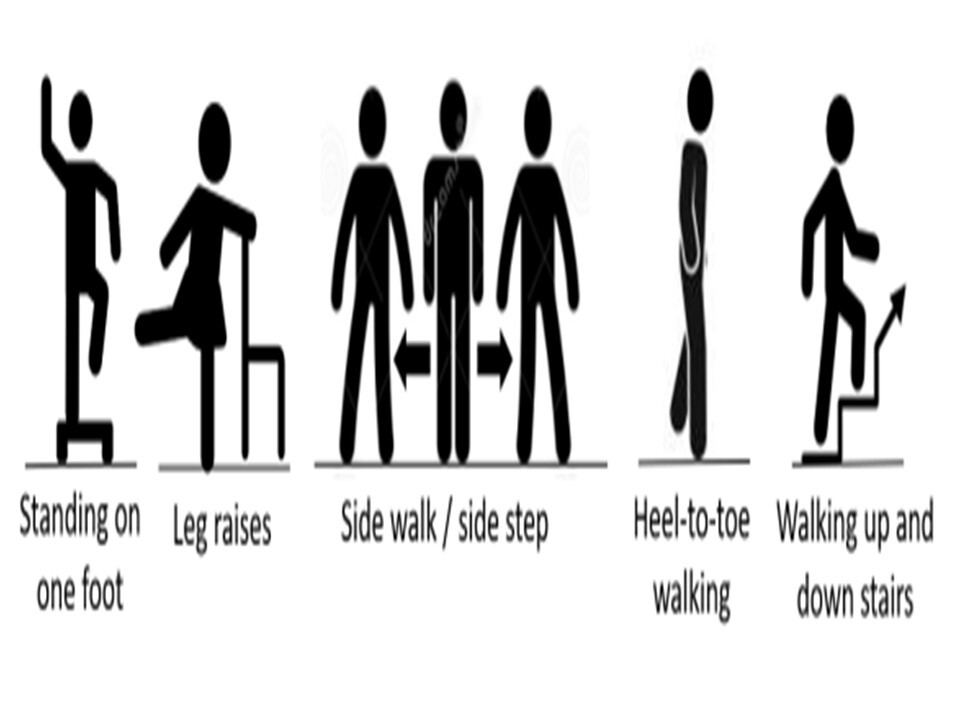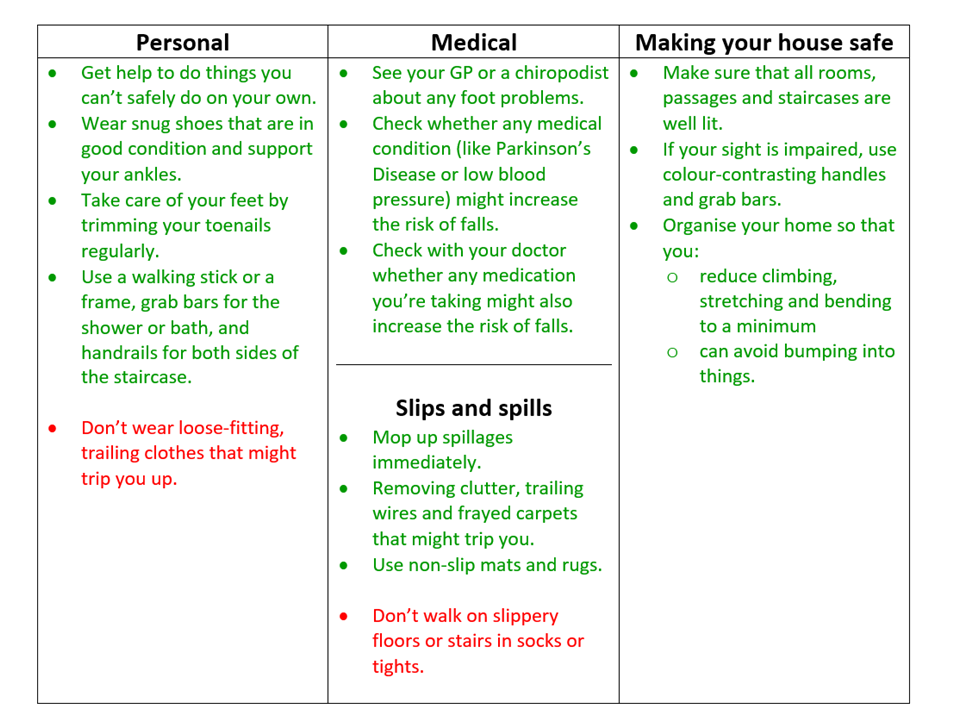|
About 1 in 3 adults living at home in the UK and aged over 65 has at least one fall each year. Preventing falls among older adults is becoming a priority worldwide. |
- Why is this important?
- Fortunately, exercise can make a difference
- Shall we dance?
- Where can we get help?
- Avoiding falls in your home
- Conclusions
Why is this important?
Having a fall can knock not just your body but also your confidence, your independence and your mental health i.e. a fall has a psychological effect too.
When a fall causes a hip fracture, the results can be particularly serious. According to a BMJ report in 2014, ‘Hip fracture is one of the most serious consequences of falls in the elderly, with a mortality of 10% at one month [after the fall] and 30% mortality at one year.’
There has been some reduction of mortality since then, according to the National Hip Fracture Database 2019 Annual Report. However, the report also notes, ‘increased numbers of hip fractures in winter months contribute to increased mortality at a time of increased pressure on trauma services.’
On the human side, falls are not only physically traumatic for the person who falls, they are also the biggest single factor causing people to lose their independence and to go into long-term care.
On the cost side, falls-related emergency hospital admissions for older people in England and associated hip-fracture injuries cost the NHS about £2 billion a year.
Fortunately, exercise can make a difference
‘Exercise as a single intervention can prevent falls in community-dwelling older people. Exercise programmes that challenge balance and involve more than 3 hours/week of exercise have greater effects.’ This is the verdict from a systematic review of research findings published in 2016.
The NHS advises that a combination of different types of exercise seems to help i.e. strength exercises and balance training. These include walking, dancing, Tai Chi and specialist training programmes for older people.
The NHS have also published leaflets and online information explaining a number of balance exercises and strength exercises you can do at home without the need for special classes or equipment. These exercises include:

Here are examples on the NHS website of other types of exercise that can help you:
Shall we dance?
Dancing also offers many health benefits, including improving strength and balance. A BUPA report mentions several studies that show that dance improves balance and gait (the way people walk). It concludes, ‘dance is also likely to have the secondary effect of reducing the risk of falls in older people.’ This is in addition to the social and mental-health benefits of dance that is also noted in the report.
One initiative that builds on this is Dance to Health, a falls-prevention dance programme for older people. This programme now operates in a number of parts of the UK and also offers online dance classes.
Avoiding falls in your home
Tips for preventing falls in the home from the NHS and from the Mayo Clinic include:
Where can we get help?
Local health services have been rolling out a programme of falls-prevention strategies so you should be able to access this through your local hospital or community healthcare team. In addition, falls risk assessments are available for individuals who have balance or gait issues or who report that they fall frequently. Your local health centre may also have information about this.
Strength and balance classes, such as Otago Later Life, are widely available, and you can also download exercise information from AgeUK’s website. Both websites provide useful pictures of the exercises.
Conclusions
- Preventing falls reduces injury at home, saves lives and saves money.
- We can do more to prevent falls:our own and friends’ and family’s.
- Exercise programmes for balance and strength training exercises – including Tai Chi, yoga and dance – all appear to reduce the risk of falls.
- You can find strength and balance exercises through the falls-prevention team at your local hospital or other recognised sources.
- Changes can also be made to the home to reduce the risk of falls.
- Check whether any medical condition or medication increases the risk of falling.
__________________________
Other relevant articles on the Age Watch website:
- Fitness: Can we dance our way to health?
- Fitness: Exercise and live longer
- Fitness: Tai Chi
- Fitness: Yoga
- Fitness: Keeping fit – Why bother?
- Ageing: Look after your body
Reviewed and updated July 2020. Next review, June 2024.

